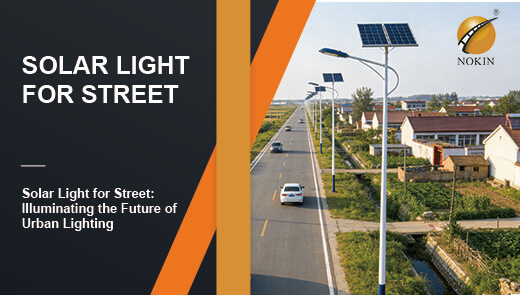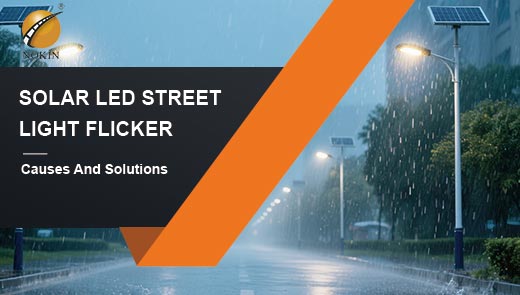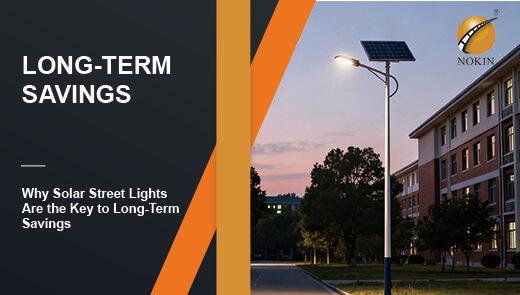6 Questions to Ask Before Start Your Solar Commercial Public lighting Project
Solar street lights, as a key component of public lighting, are gaining popularity for their zero carbon emissions and low maintenance costs, making them the preferred solution for lighting in public areas such as urban roads, parks, squares, and industrial zones. However, the successful implementation of a solar streetlight lighting project is far from a simple matter of equipment procurement and installation. Every stage—from site selection, assessment of sunlight conditions, to the selection of lighting equipment—requires meticulous planning and control. As a manufacturer and supplier of solar streetlights, Nokin will now discuss with you the key issues you need to confirm before launching a commercial public solar streetlight lighting project.
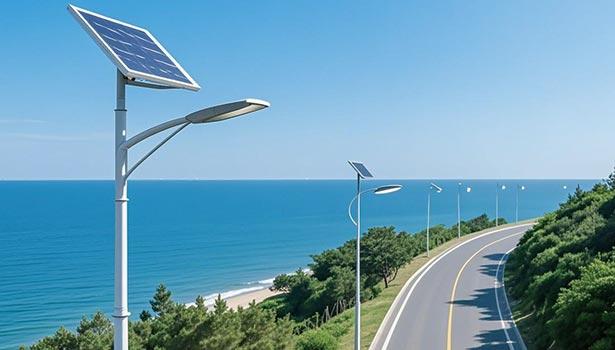
Solar Street Lighting Project Positioning and Scale
Location of the Solar Street Lighting Project
Before launching the project, the first task is to clearly define the specific location of the solar lighting project—down to the street address or site coordinates (such as latitude and longitude)—and provide a site description (e.g., suburban open areas, urban building complexes).
Why is confirming the project location so important? Sunlight conditions vary significantly across regions: for example, in the United States, southern California averages over 6 hours of sunlight per day, allowing for smaller-sized solar lighting fixtures; whereas New York averages less than 5 hours of sunlight per day, requiring a higher-power system to ensure continuous power supply. If site information is unclear, it may lead to system mismatches (e.g., using California-spec fixtures in New York) or resource waste (e.g., over-specified equipment in California). Additionally, address information helps assess shading risks from trees, buildings, etc., to avoid reduced efficiency due to prolonged shadowing of solar panels.
Quantify the Lighting Project Coverage Area
The specific dimensions of the lighting area must be clearly defined: the length and width of streets/pathways, or the area of parking lots and squares. For example, a 1-kilometer-long main road and a 500-square-meter community square require significantly different numbers of solar streetlights, layout densities, and power configurations. It is recommended to provide PDF or CAD drawings simultaneously, as professional designers can simulate lighting uniformity through the drawings to avoid “uneven brightness” lighting blind spots. This step directly impacts project cost calculations — larger areas require higher equipment investment and installation costs, and precise quantification is key to budget control.
Solar Streetlight Lighting Project Types and Installation Methods
Define Project Attribute Types
First, confirm which category the commercial public solar lighting project belongs to: new installation, retrofit of existing systems, replacement of faulty facilities, or temporary projects (e.g., exhibition or construction site temporary lighting). Different types correspond to different design logics:
New installations allow flexible planning of pole locations and wiring;
Retrofits must be compatible with existing infrastructure;
Temporary projects prioritize equipment portability and short-term durability.
Clearly defining the type of commercial solar lighting project prevents design solutions from deviating from actual needs, such as selecting high-cost permanent equipment for temporary projects, which would result in budget waste.
Determining Installation Technical Solutions
Based on parameters such as road width and number of lanes, select the appropriate installation type:
Single-side installation: Suitable for sidewalks or secondary roads with a width ≤6 meters, solar street lights are arranged along one side for cost-effectiveness;
Double-side installation: Suitable for main roads (width 6-12 meters), solar street lights are symmetrically arranged on both sides to ensure adequate lighting coverage;
Double-arm central installation: Suitable for wide roads (≥12 meters) or squares, lighting is distributed via double arms on a central pole to achieve symmetrical and uniform illumination.
Additionally, the height of the lamp posts can be flexibly adjusted for new installations: street lamps are typically 25-30 feet (approximately 7.6-9.1 meters) to ensure visibility on vehicle lanes; pedestrian path lamps are 12-20 feet (approximately 3.6-6 meters) to balance pedestrian comfort and energy efficiency.
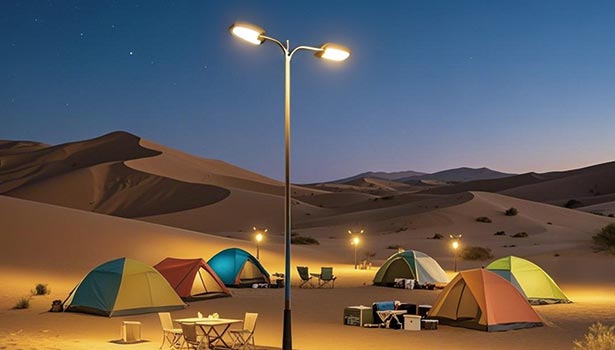
Application and Lighting Standards for Solar Street Lights
Define Scenario Functional Requirements
Different scenarios have vastly different lighting requirements:
Arterial streets: High-brightness lighting (e.g., 5-10 fc) is required to ensure the safety of vehicle traffic;
Residential area streets: Moderate brightness (3-5 fc) is needed to balance lighting and light pollution control;
Park paths: Soft lighting (1–3 fc) to create a comfortable atmosphere;
Parking lots/piers: High uniformity lighting (≥5 fc) to ensure no blind spots in security.
Scene differences directly impact pole height, spacing, and fixture power — for example, designing a pier according to path standards would result in insufficient brightness and safety hazards.
Standardize Lighting Technical Specifications
Confirm local municipal or industry standards (e.g., U.S. IESNA standards, Chinese CJJ45 standards) to specify ground illuminance intensity (foot-candles/lux) and uniformity requirements. For example, a municipal project may require “average 5 fc, minimum 0.2 fc, uniformity 4.0,” meaning luminaires must precisely control beam angles and power to avoid local over-brightness or under-brightness. If standards are not clearly defined in advance, the project may fail inspection and require rework, resulting in additional costs.
Solar Street light Equipment Selection
Solar Panels
Monocrystalline silicon solar panels
High purity, efficiency of 20%-25%, capable of efficient power generation even on cloudy days, compact size, and aesthetically pleasing design, but higher cost; recommended for government projects or high-lighting-demand scenarios;
Polycrystalline silicon solar panels
Efficiency of 15%-18%, excellent high-temperature resistance, cost-effective, suitable for projects with moderate budgets;
Amorphous silicon (thin-film) solar panels
Efficiency of only 8%-10%, short lifespan, only suitable for temporary scenarios with extremely low requirements, not recommended for public projects.
Lighting Sources
LED lighting: Low energy consumption (100-200 lm/W), lifespan of up to 50,000-100,000 hours (with slow decay), though initial costs are slightly higher, long-term maintenance costs are extremely low, making it the preferred choice for public lighting;
HID light sources (high-pressure sodium lamps/metal halide lamps): High brightness but high energy consumption (only 50-60 lm/W), slow startup, and short lifespan (10,000-20,000 hours), suitable only for short-term or low-maintenance scenarios.
Energy Storage Batteries
Battery capacity is determined by “voltage × capacity (Ah)”; do not focus solely on the Ah value: for example, a 30Ah, 3.2V battery has a storage capacity (96Wh) far lower than a 30Ah, 12V battery (360Wh).
Low-voltage batteries (e.g., 3.2V, 48V) are suitable for low-power LEDs (≤20W), but require thicker wires to prevent excessive current from damaging the controller;
High-voltage systems (e.g., 12V, 24V) are more suitable for high-power applications but have higher costs.
It is recommended to calculate battery requirements based on the total power of the lighting fixtures to avoid “small batteries powering large loads” resulting in insufficient runtime.
Color Temperature Selection
Warm light (3000K): Soft light, similar to natural light, with minimal impact on the human circadian rhythm; preferred for urban public areas (e.g., streets, parks).
Cool light (6000K): High brightness and strong visual penetration, suitable for industrial sites or security-sensitive scenarios, but care must be taken to avoid light pollution (e.g., impact on residential areas).
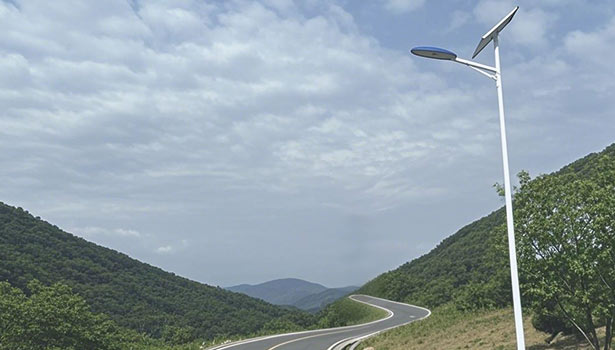
Durability and After-Sales Service of Solar Street Lights
Environmental Resistance of Equipment
Solar panels must pass wind resistance (≥12-level), snow load resistance (≥500 kg/㎡), and hail resistance (25mm diameter hail impact) tests. It is recommended to choose products with an IP65 or higher protection rating. For example, in extremely cold regions, special attention should be paid to battery low-temperature performance (such as the charging and discharging efficiency of lithium batteries at -20°C) to avoid significant reductions in battery life during winter.
After-sales and Warranty Services
Inquire whether the solar street light manufacturer provides installation guidance, system commissioning, and regular maintenance plans, and clarify the warranty period (typically 3–5 years). For public projects, it is recommended to select suppliers with a well-established service network to avoid prolonged equipment malfunctions due to slow after-sales response times.
Cost and Compliance Considerations
Budget and Return on Investment Calculations
Initial costs should cover equipment (solar panels, lights, batteries), installation (labor, wiring), and commissioning fees; long-term benefits come from electricity savings — for example, 100 LED solar street lights can save tens of thousands of dollars in electricity costs annually, with a payback period of 5-7 years. Total cost of ownership (TCO) should be assessed based on the project cycle (e.g., a 20-year service life) to avoid focusing solely on initial procurement costs.
Compliance and Certification Requirements
Verify that the solar street light complies with local environmental standards (e.g., EU RoHS), safety certifications (e.g., CE, UL), and energy efficiency labels (e.g., China's “Leader” certification). Overseas projects must particularly consider the target country's regulations, such as EU restrictions on light pollution and U.S. requirements for battery recycling, to avoid project delays due to compliance issues.
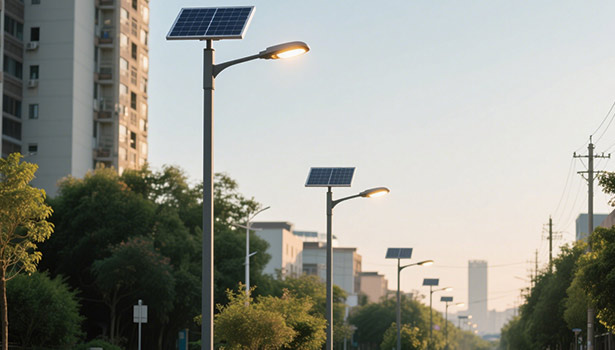
Conclusion
The success of commercial public solar street lighting projects begins with precise control of details. From site selection and solar radiation data to lamp color temperature preferences, from battery capacity calculations to after-sales network coverage, every issue reflects a breakdown of the objectives of “efficiency, durability, and cost-effectiveness.” It is recommended to use a framework of “scenario requirements + technical parameters + budget timeline” to engage in in-depth technical discussions with solar street light suppliers, ensuring that the solution aligns with actual needs throughout the entire process from design to implementation, truly realizing the value of “sunlight-driven, illuminating public spaces.”

